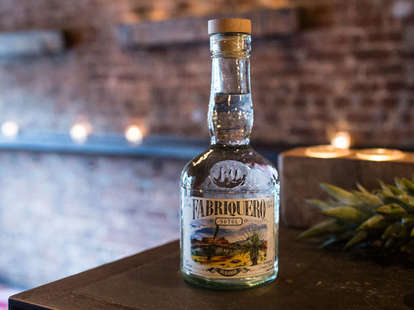Everything You Need to Know About Sotol

Over the last few years, tequila drinkers have finally caught on to the fact that there’s more to agave than blue Weber. For better and sometimes worse, legions have embraced the wider world of mezcal, drinking pretty much every agave spirit in site. More recently, lesser known satellite Mexican spirits have slowly entered the U.S. market, chief among them, sotol. Before you go guzzling this new import, here’s everything you need to know about sotol.
What is sotol?
Derived from the Nahuatl word tzotolin meaning “palm with long and thin leaves,” the word “sotol” refers to both a plant and a spirit. While the plant grows across Mexico and the Southwestern United States, the spirit comes only from Northern Mexico. Only a handful of brands are currently available in America, but their numbers are always growing, and you will now often find sotol on the backbar in well-stocked mezcal bars.
What is the sotol plant?
The sotol plant, also called dasylirion wheeleri or the “desert spoon,” was once incorrectly lumped in with agave in the agavaceae family, until DNA testing in the ‘90s proved it deserved reclassification. Along with the rest of the dasylirion category, sotol became part of the nolinaceae family.
Is sotol a tequila or a mezcal?
Let’s get this straight. Tequila is a type of mezcal. So, for that matter, are raicilla and bacanora. There are a few other historical agave spirits not specifically gathered beneath the mezcal designation like sikua from Michoacán, as well as new agave spirits from specific states in Mexico and from the U.S. Sotol, though, is not one of them as it comes from a different plant family.
How is sotol made?
Unlike mezcal, which is cooked in pits to acquire its signature smoky taste, distillers usually roast sotol piñas in above-ground ovens for several days, before crushing them, fermenting the juice in open-air vats, and distilling in column or pot stills. But Mexican regulations don’t demand this exact process. Fabriquero Sotol, one of our favorite brands, roasts its piñas over acacia, mesquite and lava rocks to impart significant smoky flavor. Some producers also age their sotols, borrowing the vocabulary of tequila to create reposado and even añejo sotols.
Where is sotol made?
Sotol received a Mexican denomination of origin in 2004 restricting legal production to the northern states of Chihuahua (historically the epicenter of the spirit), Coahuila and Durango. The denomination doesn’t extend beyond the Mexican border though, so other countries can currently make it as well. Desert Door for example, comes from Texas.
What does sotol taste like?
Sotol is usually bright and slightly grassy, closer to tequila than mezcal, and unaged bottlings tend to wear their terroir on their sleeves. Ricardo Pico of Sotol Hacienda explains to Tales of the Cocktail that forest-grown sotol takes on flavors of pine, mint and eucalyptus, while desert-born sotols have more mezcal tasting notes, with earthy, mineral and leathery flavors coming through. In aged sotols, the wood can bring out the roasted flavors of the sotol piñas, as well as sweet, sometimes fruity flavors.
How much alcohol is in sotol?
Sotol ranges from 35 to 45 percent ABV.
What are some good sotol brands?
Most sotols currently available in the U.S. hail from Durango or Chihuahua. The floral and earthy Sotol Por Siempre, from Chihuahua, is the most common on American shelves, while Fabriquero co-founder Danny Mena (also a partner in mezcal nerd favorite Mezcales de Leyenda) has put his significant industry muscle behind importing the brand from Durango. Harder to find brands are available from sites like Old Town Tequila, including La Higuera and Sotol Clande.
How to drink sotol
It’s best to appreciate sotol like other high quality agave spirits by drinking it straight, but both unaged and aged sotols make great cocktail ingredients as well. Swap Sotol Por Siempre into your favorite tequila cocktail, or follow the lead of some of the best mezcal bars in the country and mix something more creative. La Contenta in New York combines sotol with a nopal cactus cordial and lime juice for their Intrepid Cactus, while Clavel Mezcaleria in Baltimore has set up a solera aging system for a sotol Negroni, combining Sotol por Siempre, Yzaguirre blanco vermouth and Campari in the constantly remixed cocktail.